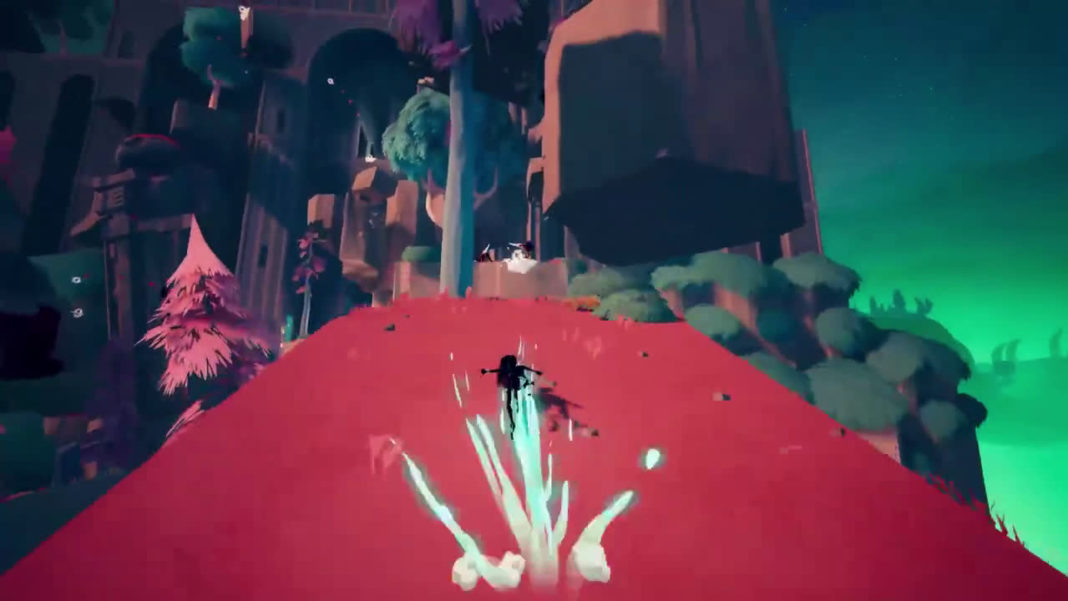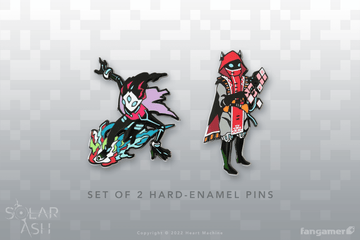

She gracefully grinds on rails littered throughout the world to reach greater heights and secret enclaves.Ĭombat is fluid, simple, and satisfying. She seamlessly grapples across gaps and up huge vertical spaces. She covers vast distances surfing across the ashen clouds with ease. You’ll play as Rei, a Voidrunner looking to save her home world from the Ultravoid itself – a massive black hole that swallows entire worlds.įortunately, Rei is well equipped for this task with incredible speed, agility, and other tools to help on her mission. Our traversable world is huge, featuring sunken cities, vast water shelves, and dangerous lava zones for players to fight through and explore. We really wanted to push scale on multiple fronts. Solar Ash is a third-person action platformer with massive scale and a focus on fluidity in movement.

We feel we’ve successfully been able to make that jump, and we hope you feel that way too. It’s an overall solid title that I can recommend to avid fans of open-world games.The transition from 2d to 3d took some time for us – building the right pipeline, gathering the right folks. The biggest setback is simply the lack of mechanical depth, which is something I hope Heart Machine expands upon with their future games. The game feels smooth and responsive to play, with great world and level design to compliment the fluent gameplay. It’s a speed and platforming-based open-world game where you ride atop gigantic creatures to defeat them. The best way I can describe this game is Sonic the Hedgehog meets Shadow of the Colossus. I always felt so powerful upon defeating each boss, and I eagerly anticipated the next showdown.

They make for an excellent blend of spectacle and gameplay, which is no easy feat to pull off. The clever thing about these bosses is that they’re designed just like the obstacle courses, meaning there’s no complex new mechanics that are thrown at the player - they simply just need to use the skills that they’ve been honing throughout the game.

These bosses are one of the game’s biggest selling points, and they provide an epic scale to each world as Rei rides on top of them to defeat them. Multiples of these can be found in each area, with the humungous boss that looms over each area becoming accessible to defeat upon destroying all of the Anomalies. These obstacles are a test of both speed and movement, challenging the player to master the game’s controls to complete each one. Unlike movement, this approach makes sense as adding anything more in-depth would lead to a convoluted control scheme that may distract from the game’s intentions of a free-flowing and non-disruptive experience. Speaking of enemies, combat is arguably more simplistic than movement, with simple presses of a button to perform multiple sword slashes. This ability can also be used to grapple towards enemies, helping to make it feel less like a one-and-done gimmick and more of a properly integrated mechanic of the game. This requires the player to aim their reticule towards these grapple points, leading to more involved and precise movements that help to elevate the flow of gameplay. The game comes close to complexity with a time-stopping ability that allows Rei to hone-in on context-sensitive grapple points from a distance. I hope to see Heart Machine expand on this core formula for their future releases. It’s not a complete deal-breaker but expanding upon this general foundation could make for an experience that isn’t just great, but exceptional.


 0 kommentar(er)
0 kommentar(er)
